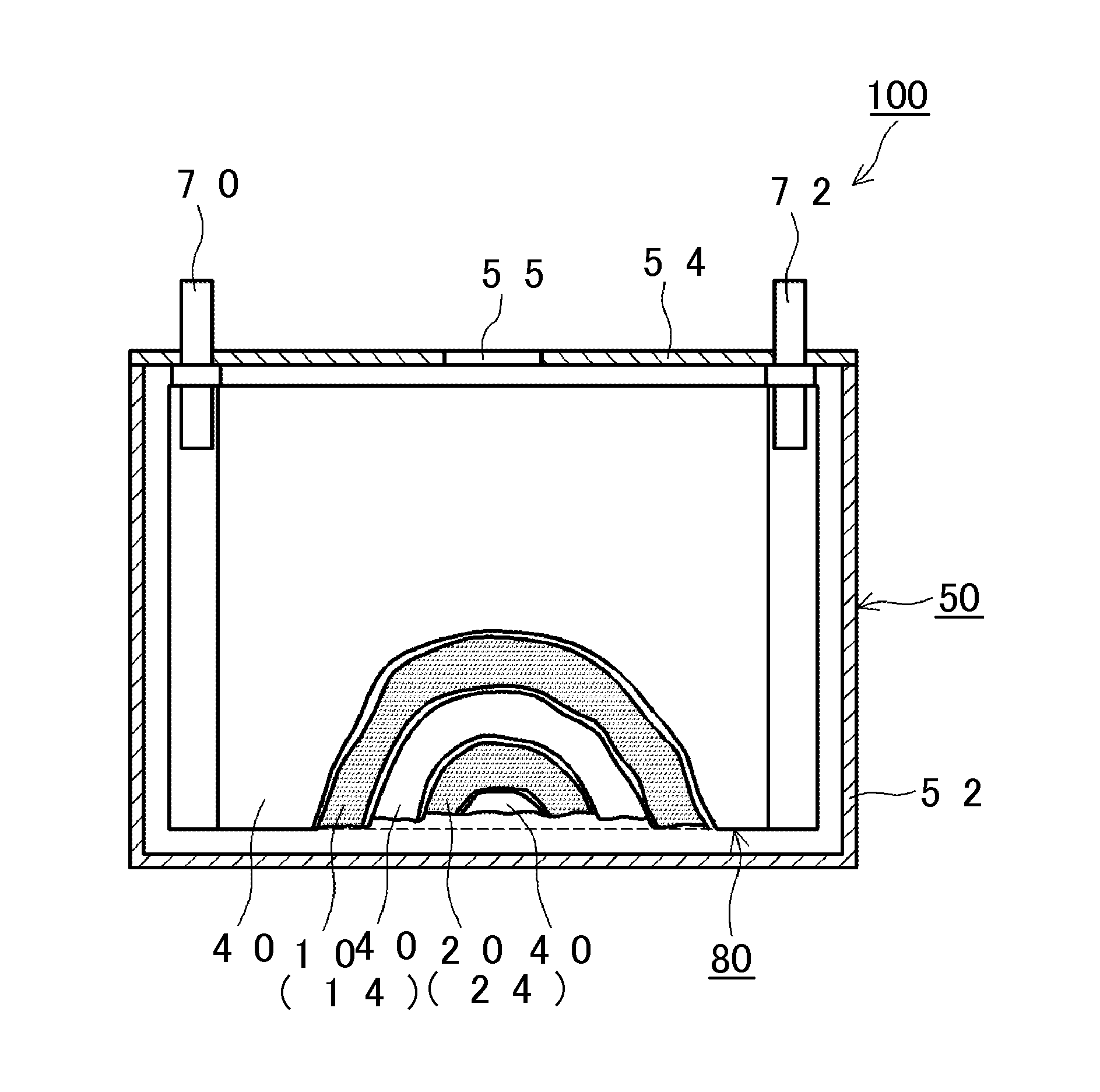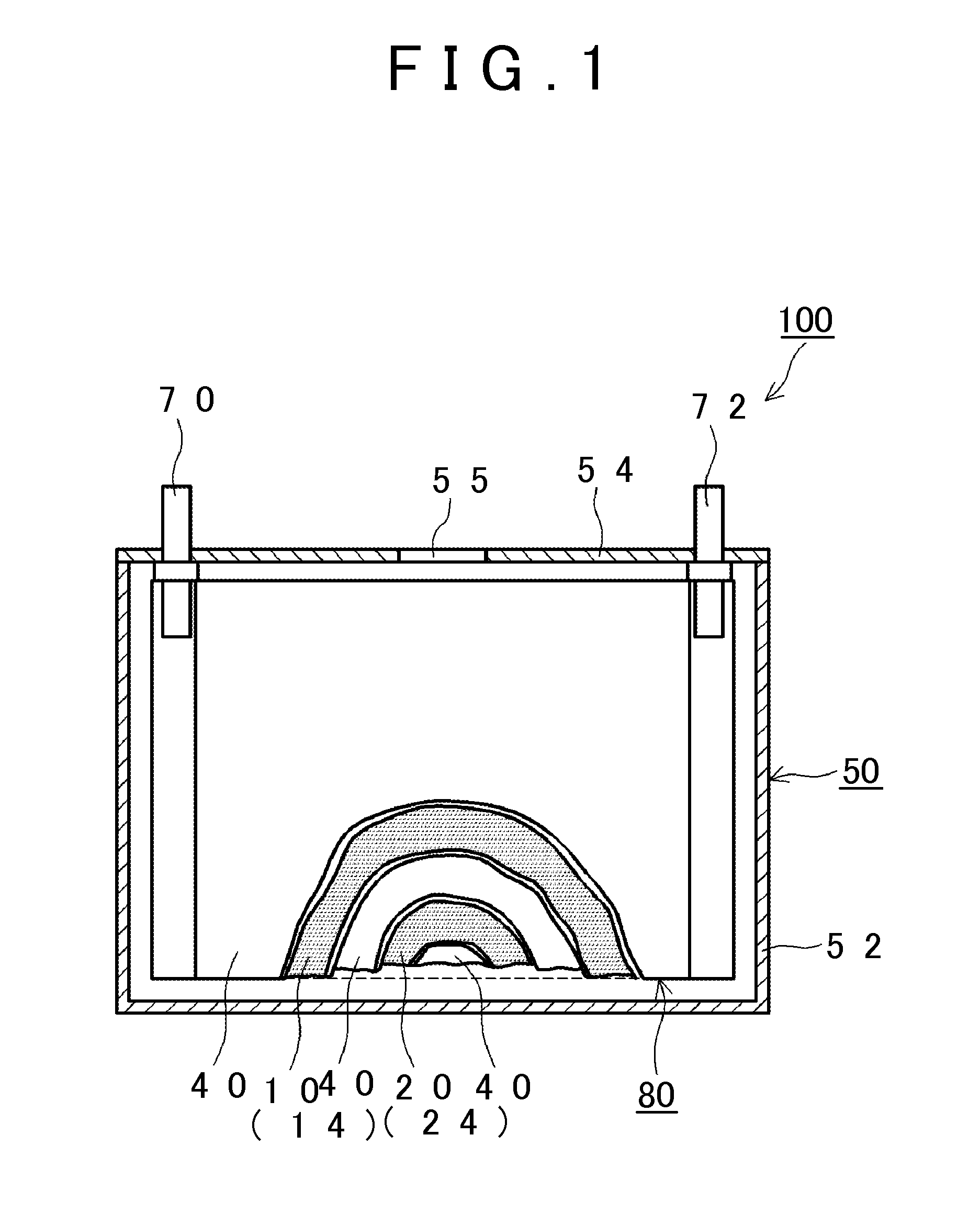Positive active material for lithium-ion secondary battery, positive electrode for lithium-ion secondary battery, and lithium-ion secondary battery
a lithium-ion secondary battery and positive electrode technology, applied in the direction of batteries, cell components, electrochemical generators, etc., can solve the problems of reducing the initial characteristics and and reducing the durability of positive active materials. , to achieve the effect of excellent initial characteristics and durability, low resistance and high energy density
- Summary
- Abstract
- Description
- Claims
- Application Information
AI Technical Summary
Benefits of technology
Problems solved by technology
Method used
Image
Examples
Embodiment Construction
[0025]Hereinafter, exemplary embodiments of the present invention will be described. In addition, items which are not the items (for example, the configuration of a positive active material) that are particularly mentioned in the specification and are necessary items (for example, other battery constituent elements that do not characterize the present invention, a general manufacturing process of the battery, and the like) for the implementation of the present invention can be recognized as design items of the skilled based on the related art in a corresponding field. The present invention can be implemented on the basis of the contents disclosed in the specification and general technical knowledge in the corresponding field.
[0026]In the specification, a “particle center portion” is a region including the center of a particle and the vicinity thereof. Typically, the particle center portion refers to a region of about 100 nm or greater inward from the outermost surface of the particl...
PUM
| Property | Measurement | Unit |
|---|---|---|
| temperature | aaaaa | aaaaa |
| radius | aaaaa | aaaaa |
| radius | aaaaa | aaaaa |
Abstract
Description
Claims
Application Information
 Login to View More
Login to View More - R&D
- Intellectual Property
- Life Sciences
- Materials
- Tech Scout
- Unparalleled Data Quality
- Higher Quality Content
- 60% Fewer Hallucinations
Browse by: Latest US Patents, China's latest patents, Technical Efficacy Thesaurus, Application Domain, Technology Topic, Popular Technical Reports.
© 2025 PatSnap. All rights reserved.Legal|Privacy policy|Modern Slavery Act Transparency Statement|Sitemap|About US| Contact US: help@patsnap.com



